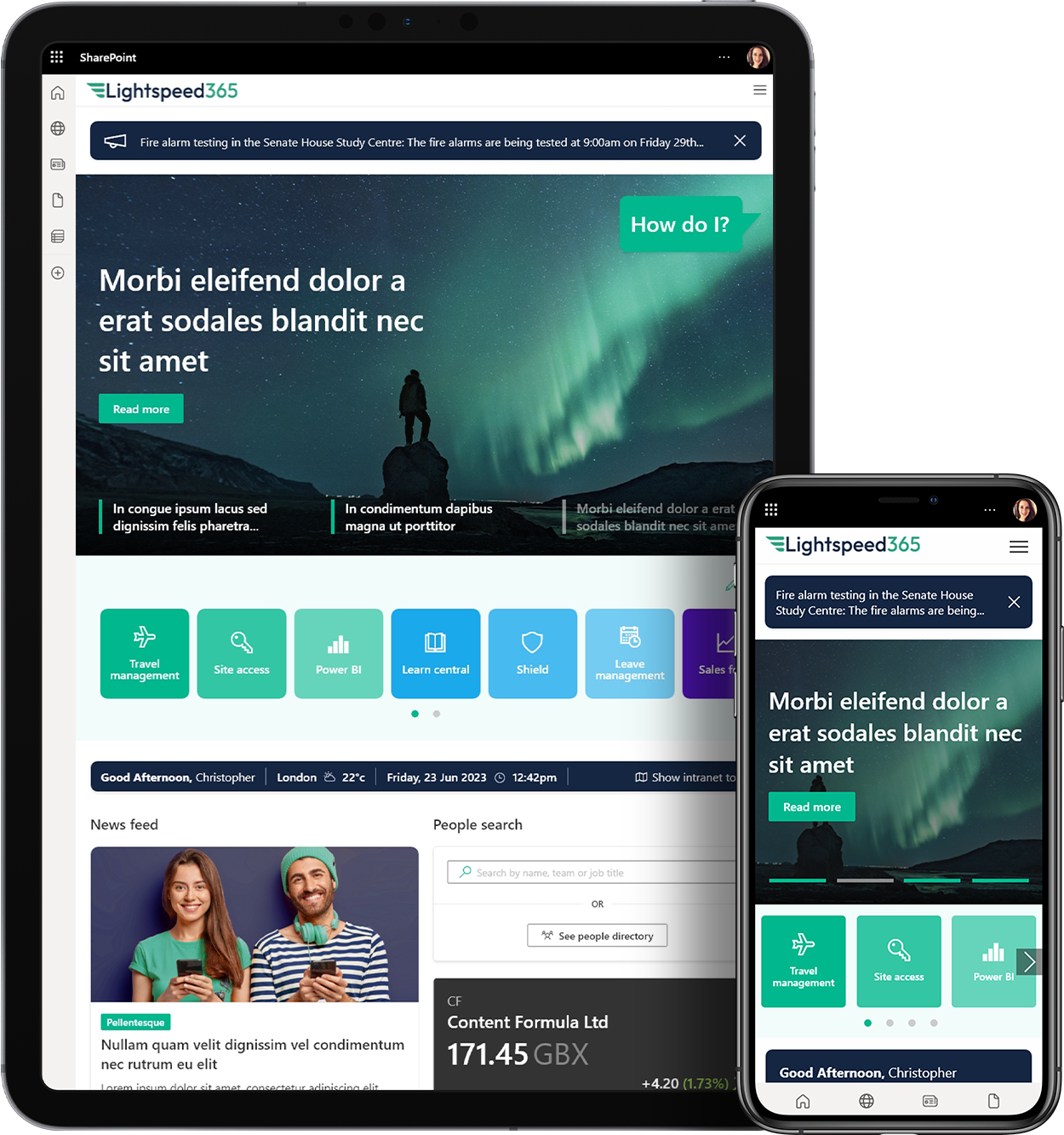
What is the digital workplace?
The digital workplace is a term that is commonly used in conjunction with Microsoft 365 projects, intranets, collaboration platforms and other similar enterprise solutions that support collaboration, communication and engagement.
But what actually is the digital workplace? While most of us have an idea of what it generally refers to – perhaps a digital environment accessed for work or the systems we spend our working day in – many teams don’t have an exact definition of what the digital workplace actually is. In this post we’re going explore what the digital workplace is, and some of the different definitions that have been made.
There is no consensus on the digital workplace, but it matters
First of all, it’s important to state that actually there is no industry-wide standard consensus on what the digital workplace is. It can relate to both a specific technology environment, but also as a wider term that implies a strategic approach to designing and managing it.
A related question is whether this actually matters and whether you need to have a definition of what the digital workplace is. Our view is that if you are using the term “digital workplace” to describe your project or environment then it is good to have a set definition of what it is. This helps you to engage stakeholders and users who might be less familiar with the term, ensuring that everybody is working from the same page, and also to reduce misunderstandings.
How long has the term been in use?
The digital workplace as a term and concept has been around for nearly 15 years and was originally used by pioneers in the intranet and workplace technology space including Paul Miller from the Digital Workplace Group (DWG) and Jane McConnell.
While the term remained quite niche, it started to become more mainstream as it became increasingly used by technology analysts like Gartner and some other software vendors. Now it is a commonly used term by agencies, consultants, vendors and major players like Microsoft. Here at Content Formula, we’ve been using the term for a number of years.
What are some definitions of the digital workplace?
There are some different interpretations of exactly how to define the digital workplace. In a way, these are all correct and we’ve incorporated different nuances around the definition depending on the clients we’ve worked with. Let’s look at some of the main ones.
The digital workplace as all digital tools
At the highest level, the digital workplace can refer to the technology we use every day at work, covering all the enterprise applications in use. This is actually the definition that DWG use, describing the digital workplace as:
“the collection of all the digital tools provided by an organization to allow its employees to do their jobs.” .
This means that all organisations have some sort of digital workplace, stretching from extremely basic to highly sophisticated.
The digital workplace as a planned ecosystem
Others when defining the digital workplace refer to a more planned, controlled, coherent and designed approach to workplace technology. In these cases, the digital workplace is a deliberate, managed and optimised ecosystem that delivers distinct benefits.
For example, Gartner refers to the digital workplace as something that “enables new, more effective ways of working; raises employee engagement and agility; and exploits consumer-oriented styles and technologies.”
Typically, the kind of benefits envisaged include:
- Greater productivity and efficiency
- Process improvement
- Enhanced employee engagement
- Stronger collaboration
- Better communication
- A better employee experience
- Enabling automation and workflow
- Driving innovation.
The digital workplace as the counterpart to the physical workplace
A variation of the definition of a planned ecosystem, is when the digital workplace is presented as a digital counterpart to the physical workplace, a virtual equivalent. For example, Sam Marshall at ClearBox has used the metaphor of a town to illustrate the concept and scope of the digital workplace. This can be a useful definition, particularly when trying to explain the concept to stakeholders who are unfamiliar with the term.
The digital workplace as a distinct environment
A digital workplace is also sometimes described as a specific integrated environment that has a set number of tools within it rather than the entire set of enterprise applications. For example, a digital workplace might consist of a number of Microsoft 365 tools. Another digital workplace might be the tools that are specifically supported by the IT function.
This tends to be a definition that is found inside organisations. An IT team might refer to their Microsoft 365 environment with SharePoint, Microsoft Teams, Yammer, Microsoft Viva, Outlook, OneDrive and other more niche 365 solutions as a “digital workplace”.
The digital workplace as the front door to the wider environment
Some organisations have also used the term “digital workplace” to describe what is effectively actually an intranet or portal but which links through to other applications, has single sign-on and also might include some integrations with other key corporate systems like ServiceNow. Effectively the intranet or portal is a “front door” or single-entry point to the wider workplace technology environment.
In some cases the term “digital workplace” is sometimes being used interchangeably to describe both this “front door” and the wider digital environment that people can access. In our view an intranet is an intranet; it’s not a digital workplace but is often a very important channel within the wider digital workplace. However, the term can be useful in positioning the intranet to users and stakeholders, as a gateway to other services.
Digital employee experience vs Digital workplace
Another term that is frequently used in this space is “digital employee experience (DEX)”. We tried to define this in a previous post and found seven different definition. DEX is distinct from the digital workplace – it’s an outcome of it and its design, not an environment in itself. Going wider, employee experience itself takes in many different factors, including experience of digital technology.
Which digital workplace definition works best for you?
There are multiple definitions of the digital workplace, most of which are overlapping. None of them are incorrect and used in the right way, they all have value. However, we do believe it helps to decide what the term means to your organisation and then to use it consistently in your projects. You will achieve a common understanding by considering and defining the scope and value of your digital workplace.
If you’re still confused about what the digital workplace is and want to discuss it with us, or if you’ve got a completely different definition to any of the above, then get in touch!



 SharePoint Products
SharePoint Products

